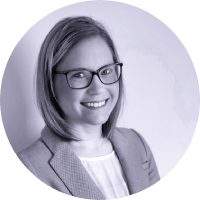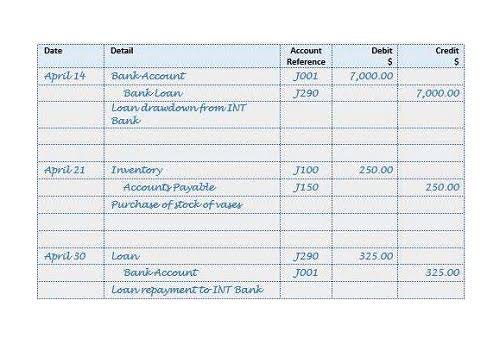
Getting all relevant information about your operational expenses lets you know whether you are in the right financial state to cover additional production costs before starting any project. Incremental cost analysis will save you from engaging in unprofitable business ventures that can ultimately damage your financial state. In a low-cost pricing strategy where the incurred incremental cost decreases production cost per unit, the company may opt to reduce its selling price to stimulate demand and gain a competitive advantage. The distribution of fixed costs to total costs decreases proportionately with the number of units produced, so extra care must be taken. It simply computes the incremental cost by dividing the change in costs by the change in quantity produced.
- Incremental cost includes a cost-to-benefit analysis to guide businesses in smartly choosing battles.
- Upgrading to a paid membership gives you access to our extensive collection of plug-and-play Templates designed to power your performance—as well as CFI’s full course catalog and accredited Certification Programs.
- Producing more does not always lead to profitability (i.e. your incremental cost can far exceed your incremental revenue), and knowing your numbers at different scales of production ensures you do not fall for this trap.
- It takes into account all relevant costs and benefits when making investment decisions.
- A high composite cost of capital indicates that a company has high borrowing costs; a low composite cost of capital signifies low borrowing costs.
- Austin specializes in the health industry but supports clients across multiple industries.
Incremental Cost Decisions
Determine the total cost of normal production and then compute what the total cost will be if one or more additional units are produced. Complete the calculation by taking the difference between the two figures and applying the incremental cost per unit formula. The formula is the difference in total cost divided by the number of additional units produced. The usual variable https://www.bookstime.com/ costs included in the calculation are labor and materials, plus the estimated increases in fixed costs (if any), such as administration, overhead, and selling expenses. The marginal cost formula can be used in financial modeling to optimize the generation of cash flow. As you increase the number of units produced, you may find that the cost per unit decreases.
Incremental Cost of Capital: Definition, Overview & Example
- Incremental cost specifically tells business owners about the worthiness of allocating additional resources for a new production volume.
- The cost of producing 15,000 units is $120,000, meaning the additional cost to expand your production to this level is at an incremental cost of $20,000.
- If the LRIC increases, it means a company will likely raise product prices to cover the costs; the opposite is also true.
- Even though Line B generates more revenue than Line A, its resulting incremental cash flow is $5,000 less than Line A’s due to its larger expenses and initial investment.
- A simple way of describing incremental cost is as the additional money a business must spend to produce one additional unit.
- To generate a steady flow of incremental sales, it’s vital to approach the idea systematically.
- Participants’ responses to the EQ-5D-5L questionnaire were used to estimate health states utilities using the Irish value set [14].
There can be a lot to know and understand, which is why we created this article about the incremental cost of capital. This is an example of economies of scale, or the cost advantage companies get when production becomes efficient. And the more units sold at marginal cost, the higher its contribution to the net income.

Capitalization Table (Cap Table)
Strategic consideration of incremental costs becomes especially important to avoid the traps of overproduction or underproduction, maximize resource utilization, and maintain a balanced operational strategy. This nuanced understanding and its relationship to both variable and fixed costs is critical for making effective decisions in the dynamic realm of production expansion and pricing strategies. From this analysis, we can reliably conclude that HSCP represents value to the Irish health system and should be adopted as part of treatment as usual in Irish EDs. While these dedicated HSCP teams are currently in situ across the majority of ED in Ireland, further work is ongoing to establish core standards of care across these teams. Fig 2 illustrates results from the analysis of the uncertainty of the joint distribution of total cost and QALY. In contrast the clinical effectiveness analysis [3], this diagram specifically explains data available for use in complete case cost effectiveness analysis.
What is the cost of incremental sales
Inspection of baseline characteristics indicated that trial randomisation produced well balanced groups across most characteristics and that the trial was sufficiently powered for cost effectiveness analysis. A dedicated HSCP team in the ED significantly improves overall health for lower acuity older adults and, by reducing inpatient length of stay, results in staggering cost savings. This economic evaluation conducted on the OPTI-MEND trial provides convincing evidence that HSCP should be adopted as part of treatment as usual in Irish EDs.

The marginal cost is the change in total cost that comes from making or producing one additional item. The purpose of analyzing marginal cost is to determine at what point an organization can achieve economies of scale, which refers to the reduced costs per unit that arise from an increased total output of a product. Long run incremental costs (LRIC) usually impact the price of a good or service as well.
Trial design

At its core, incremental cost of capital refers to a single unit that a company must raise. The tobacco business has seen the significant benefits of the economies of scale in Case 3. The incremental cost was kept lower at $70,000 while producing twice its production capacity, leading to a higher net income. Let us assume you are in the shirt manufacturing incremental cost business and spend $100,000 to make 10,000 shirts. Now, let’s say you are considering expanding your production capacity for maximum raw materials, labor, and location utilization. If no excess capacity is present, additional expenses to consider include investment in new fixed assets, overtime labor costs, and the opportunity cost of lost sales.
What Figures Do You Use to Find Direct Labor When It Is Missing From a Formula?
The fixed cost will reduce against the cost of each unit manufactured, thus increasing your profit margin for that product. A specific material used in production is a variable cost because the price changes as you order more. Bulk orders are often at a reduced rate, creating a variable to factor into your incremental calculation. Incremental cost is usually computed by manufacturing entities as a process in short-term decision-making. It is calculated to assist in sales promotion and product pricing decisions and deciding on alternative production methods.